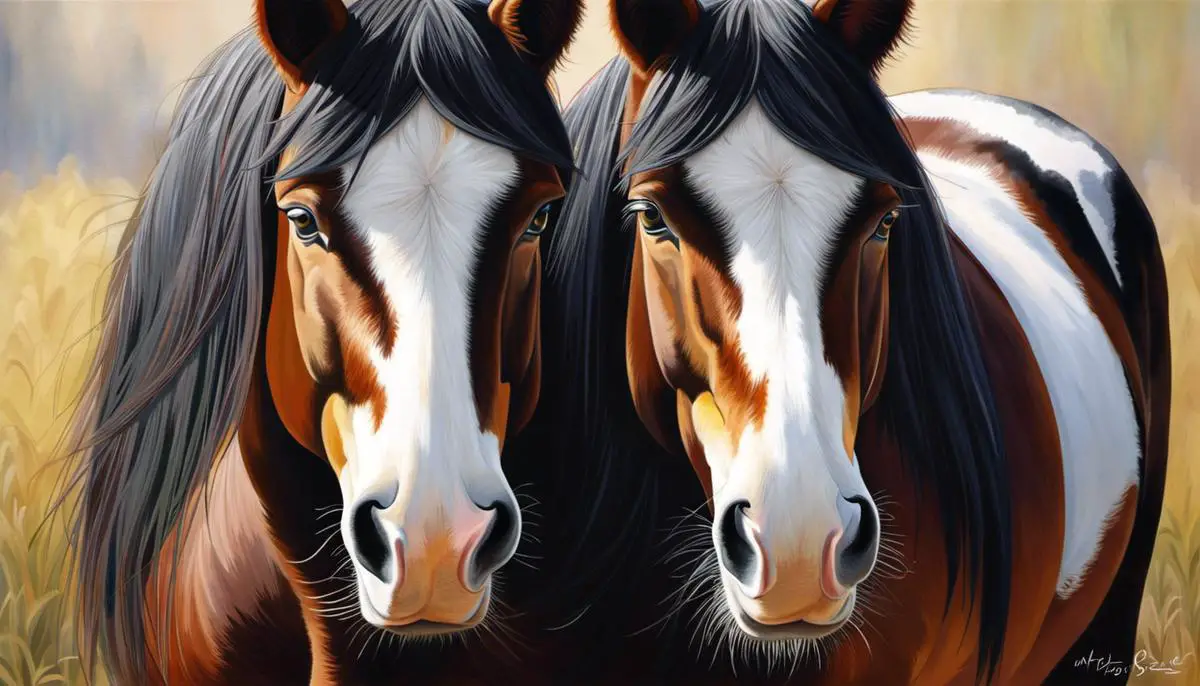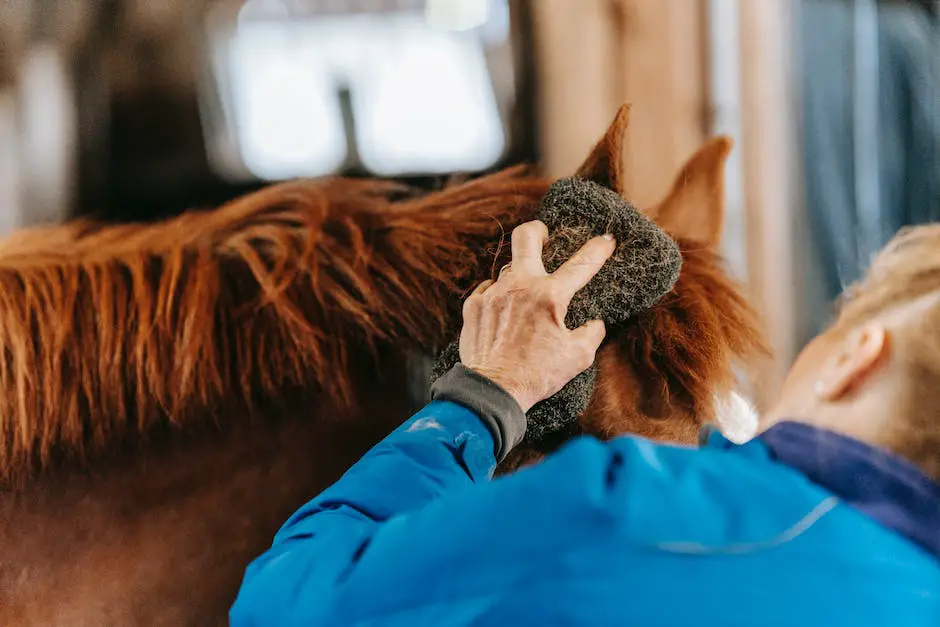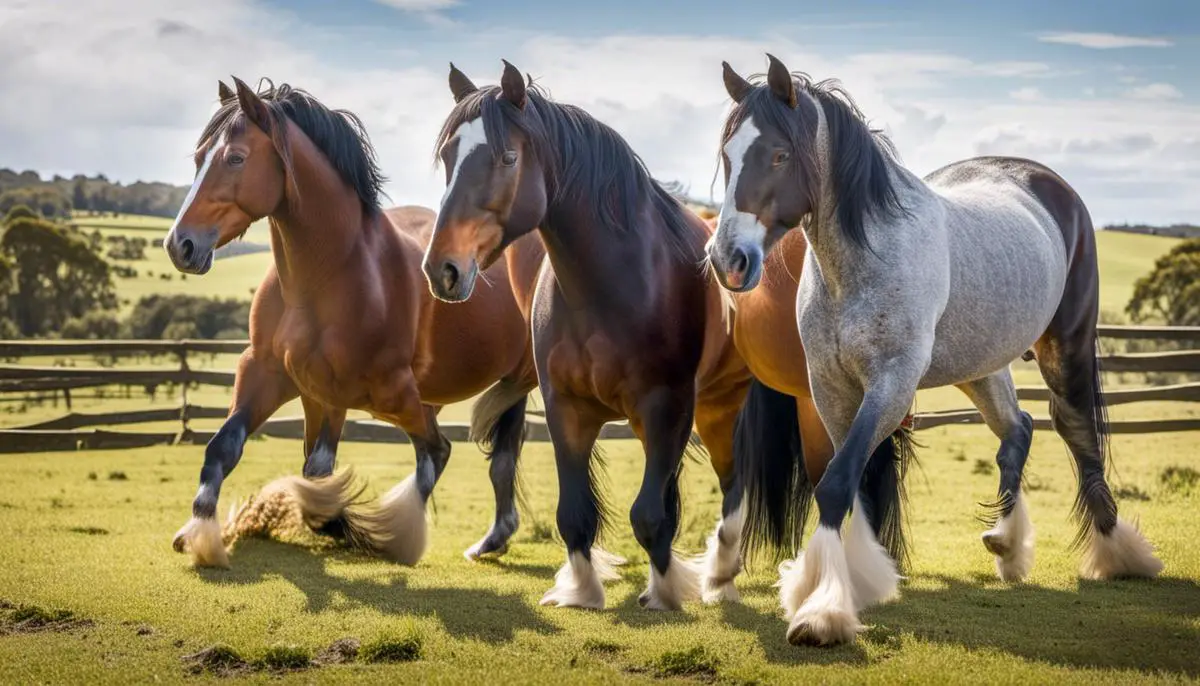The equine world boasts an incredible variety of breeds, each with their own unique characteristics, traits, and historical significance. Among these majestic creatures, the Shire Horse and the Australian Drafter have captured the attention of equine enthusiasts and historians alike. The Shire Horse, heralding from the United Kingdom, is renowned for its immense size, physical strength, and its significant role in agricultural practices. On the other end of the spectrum, the Australian Drafter, shaped by the rugged terrain of the Australian landscape, is praised for its agility, speed, and versatility in cattle herding. This exploration into both the Shire Horse and Australian Drafter delves beyond their appreciation as mere domesticated animals but exalts them as living records of human history, society, and culture.
Table of Contents (Horspedia)
History and Background
History of Shire Horse
Shire horses have a rich historical background tracing back to the medieval era. Originating from England, they were initially known as “The Great Horse,” used by knights in battle due to their strength and size. As they evolved, these horses became essential for farming work and pulling heavy loads in an industrial context. During the mid-18th to early 19th centuries, Shire horses played a significant role in the Agricultural and Industrial revolutions, respectively.
However, with the advent of modern machinery, the demand for Shire horses decreased significantly. There was a near extinction of the breed until enthusiasts and conservationists stepped in to revive and preserve the lineage. Today, they are primarily used as show horses and held high esteem due to their historical significance.
Cultural Importance of Shire Horse
Shire horses hold a place of honor in English folklore and tradition. They are often associated with the renowned breweries of England, where they were once key to beer transportation. Shire Horse Societies in different regions actively involve themselves in showcasing these magnificent creatures at trade shows and fairs, underlining the cultural significance and historic charm of the breed.
History of Australian Drafter
Australian drafters, as the name implies, originated from Australia. Breeding began around the 19th century when there was immense need for horses that could cope with the rough environment of the Australian Outback and help in farming activities. Australian drafters descended from horses brought by European settlers, including Timor Ponies and English Thoroughbreds, among other breeds.
The breed played a massive role in shaping Australia’s outback regions, proving to be a reliable transportation and working partner. Between the late 19th and early 20th centuries, competition among breeders led to the Australian drafter’s versatile and agile nature. Despite modernization, the Australian drafter remains an integral part of Australian stockmen culture.
Cultural Importance of Australian Drafter
The Australian Drafter, commonly known as the Australian Stock Horse, carries significant cultural importance as it symbolizes the hardy, pioneer spirit of the nation’s outback. In a vast, rugged landscape where transportation was essential yet testing, the Australian drafter became crucial. Its ability to navigate the tough terrain became symbolic of the endurance and adaptability of the Australian spirit.
Today, the Australian drafter continues to be celebrated for its contribution to history. The breed has a dedicated Australian Stock Horse Society aiming to preserve and promote the heritage associated with these animals. The horse is also a star of Australian competitive sports, particularly in campdrafting and polocrosse, further embedding its cultural significance into modern Australia.
Overview
Providing an insightful look into their originating cultures, the Shire Horse and the Australian Drafter are both impressive horse breeds with rich and notable histories. The significant role played by the Shire Horse in English history, often linked romantically to knights and chivalry, as well as the importance of the Australian Drafter to rugged outback life, encapsulate the resilience and spirit of their native regions. Both breeds have evolved as enduring symbols of these regions, inspiring a sense of nostalgia whilst continuing to serve in new and modern contexts.

Physical Characteristics
Describing the Shire Horse
Notably one of the tallest breeds globally, the Shire Horse reaches heights of 17 to 18 hands (68 to 72 inches) for adult males, often weighting in excess of 2,000 pounds. Females, referred to as mares, are somewhat smaller but maintain an impressive stature nonetheless.
Characterized by a straight profile, the Shire also features a long, arching neck and a robust, deep chest. Their build is solid with a heavy bone structure, resulting in a strong, muscular exterior. Distinctive features of the breed include their large, feathered feet and their lush, flowing manes and tails.
Shire horses exhibit various coat colors, including black, bay, and gray, but are predominantly recognized for their dark, solid coats. Some shire horses may also present a roan coat or white patches on a colored coat, typically visible on their face or legs.
Belying their substantial size and strength, Shires are generally noted for their calm and docile temperament. Their outstanding stamina and resilience are additional characteristics that are widely acknowledged.
Unfortunately, hereditary diseases like chronic progressive lymphedema and shivers are often attributed to the Shire. Chronic progressive lymphedema causes progressive lower limb swelling, while shivers can lead to spasms and movement difficulties.
Physical Characteristics and Temperament of Australian Drafter
Renowned for being developed to handle the challenging climates and diverse terrain in the Australian outback, the Australian Drafter, or Australian Stock Horse, stands approximately 14 to 16 hands (56 to 64 inches) tall and typically weighs somewhere between 900 and 1,200 pounds. Comparatively less sturdy but more agile than their Shire Horse colleagues, these horses show a balance of strength and dexterity which is hard to match.
This breed is easily distinguishable by their refined heads and alert, intelligent eyes. The well-balanced and muscular bodies of an Australian Drafter are less bulky than a Shire Horse’s, endowing them with agility essential for work and performance. The coats of these horses can be found in various solid colors, including chestnut, black, grey, brown, and bay, and roan-coated Australian Drafters, similar to the Shire, may also be seen.
One of the most notable characteristics of the Australian Drafter is its adaptability. Renowned for their hardy constitution, high endurance, and their ability to thrive in various conditions, they are a testament to resilience. However, like all breeds, the Australian Drafter is sometimes prone to Laminitis, a painful foot condition, and Equine Metabolic Syndrome, which bears similarities to metabolic disorders found in humans and can lead to obesity and laminitis.
When considering temperament, Australian Drafters are celebrated for their composure, willingness to work hard, and their ability to handle stress exceedingly well. This makes them dependable choices for both work and competition scenarios.

Temperament and Behavior
Behaviour, Temperament and Traits of Shire Horses
English native breed, Shire Horses, have earned a famous reputation for being steadfast and composed, delighting humans with their calm and gentle behaviours. Despite their impressive size, they are lovingly nicknamed “gentle giants” due to their tranquil nature. Shire Horses are known for the versatility they bring to tasks, such as cart pulling and racing, with great prowess. This, coupled with their strong work ethic, make them well cut out for exerting tasks that need strength and resilience, like plowing fields or carrying heavy goods.
This disposition extends to their relation with humans as well. Shire Horses are noted for being patient and displaying an amicable personality. They are receptive to friendly treatment and clear, consistent communication, typically sharing a solid bond with their caretakers. Despite being quite colossal in size, they’re perfectly safe around both adults and children thanks to their composed and predictable nature.
Shire Horses are a unique blend of massive size and endearing temperament, often presenting themselves as elegant or knightly. Good behaviour comes naturally to them, but like any breed, they require regular care and training to keep up their best behaviour.
Australian Drafter Temperament and Behavior
Australian Drafters, also known as Australian Stock Horses, are renowned for their intelligence, agility, and reliable temperament. They originated in Australia, and were bred specifically for working with livestock in the rough Australian terrain. As a result, they are incredibly tough and resilient, and have an intuitive sense for working with cattle.
Furthermore, Australian Drafters are known for their incredible versatility, excelling in a wide range of activities, such as showjumping, dressage, and polo. They are known for their quick responsiveness and high stamina, which make them excellent work horses in heavy-duty roles.
In terms of behavior, Australian Drafters are known for their unique combination of agility, intelligence and calm demeanor. They have an innate “sense” for working with cattle that goes beyond training – a trait that makes them excellent working partners in the field. They are also known to be quite loyal, and often form tight bonds with their human caretakers.
Despite their workhorse nature, Australian Drafters are also known for their gentle and calm demeanor. They usually get along well with other horses, and are generally safe around people, including children. Like the Shire Horse, they respond well to consistent, clear communication and kind treatment.
As a general conclusion, the Shire Horse and the Australian Drafter are both highly valued for their notably calm demeanor, hardiness, intelligence, and adaptability. That being said, Shire Horses with their powerful strength and endurance are ideally suited to tough tasks, while the agility and inherent sharp-wit of Australian Drafters make them a superb choice for roles that necessitate precise, swift actions, such as guiding livestock.

Uses and Roles
An Examination of Shire Horses: From Traditional Uses to Contemporary Functions
Originating from England, the Shire Horse is a draft breed distinguished by its immense size and physical strength. Traditional uses for this breed encompass agricultural tasks like plowing and hauling heavy loads as well as serving as war horses owing to their superior size and might. Their significant contribution to the Industrial Revolution, where they were instrumental in the transportation of heavy materials in urban settings and factories, is a noteworthy aspect of their history.
In modern times, the role of Shire horses has evolved more towards recreational and marketing purposes. Their commanding presence and unique appearance make them standouts in events such as shows and parades. Being the chosen breed for pulling brewery drays, particularly in the United Kingdom, speaks volumes of their cultural significance, tracing back to an era where horse-drawn carriages were the norm. Competing in draft horse competitions that highlight their strength in short-distance heavy load pulling is another area Shires are commonly seen in. Retaining a place in farming, their hardiness and patience see them used in their traditional roles in some regions.
Australian Drafter: From Cowboys to Competition
The Australian Drafter, often known as the Australian Stock Horse, is praised for its agility, endurance, and versatility. Originally bred for working with cattle in Australia’s harsh climates, they are well-regarded for their capacity to cover large distances at a fast pace. Farmers and cowboys widely used them for mustering cattle, hence the nickname, “The Breed for Every Need.”
Presently, Australian Drafters excel in a variety of equestrian disciplines beyond ranch work. Their speed and agility, along with their ability to make tight turns, make them superstars in campdrafting events, a popular sport in Australia where horses and riders work together to ‘draft’ cattle out of a herd and guide them through a specific course.
This breed is also successful in show jumping, eventing, and dressage, and other formal equestrian competitions. Australian Drafters, renowned for their versatility and intelligence, are also used for pleasure riding, trail riding, and endurance tests. Furthermore, they are often selected for police work, mounted patrols and ceremonial uses thanks to their soundness, adaptability, and reliable temperament.
Breaking Down the Differences: Shire Horse versus Australian Drafter
When comparing the Shire horse and the Australian Drafter, it’s clear each of these breeds bring unique qualities to the table. The Shire horse, a towering symbol of strength and grace, shines in areas that require great power and endurance, and its impressive stature makes it a showstopper during events and parades. In contrast, the Australian Drafter, renowned for its swift, agile movements, is the breed of choice for competitive sports requiring speed and precision.
Though both breeds have deep roots embedded in farm work, their roles have evolved alongside changes in the horse industry, with more emphasis today on leisure activities, sporting competitions, and public relation roles. Despite these differences, what unites these breeds is their ability to adapt and their long-standing history of enriching various industries and societies around the world.

Care and Maintenance
Maintaining the Health of a Shire Horse
The Shire horse’s grand size and congenial disposition bring about certain unique care requirements. Known for their strength and gentle nature, these horses need a carefully balanced diet full of quality feed. They consume large quantities of food, typically 2.5-3.5% of their body weight in dry matter, which should be divided into a few small servings to avoid digestive issues.
Their large hooves demand regular maintenance, usually every six to eight weeks by a seasoned farrier. Consistent exercise is crucial to ward off obesity and ensure overall well-being, as is consistent grooming to keep their long manes and feathered legs free of tangles and dirt.
Administering yearly vaccines and consistent deworming is vital to a Shire horse’s health, along with regular dental check-ups to find potential problems early. Any dental issues could lead to loss of condition if left untreated.
Australian Drafter Care and Maintenance
Australian Drafters, also known as Australian Stock Horses, are lauded for their agility, stamina, and versatility. They need a healthy, balanced diet, with quality forage and grain depending on their work level. They tend to be easier keepers than Shire horses, often thriving on good pasture alone.
Daily exercise is particularly important for Australian Drafters, given their energetic nature and working horse origins. With a more compact body than Shire horses, they require less grooming, although regular care should still be administered to keep the coat healthy and shiny.
Australian Drafters also need regular hoof care. However, their feet are hard and tough, generally requiring less shoeing compared to Shires. Like all horse breeds, they need routine vaccinations, worming, and dental care for a healthy, long life.
Recommendations for Ensuring Longevity and Quality of Life
There are common practices suitable for the care of both Shire horses and Australian Drafters. Vaccination against common equine diseases, regular worming, and dental check-ups are a must. Attention to their diet, ensuring it is balanced and supplemented if necessary, is crucial for maintaining good health.
Adequate exercise is important for both breeds. Shire horses, with their propensity for weight gain, might require more consistent exercise to maintain a healthy weight. Australian Drafters, on the other hand, require mental stimulation in addition to physical activity due to their working horse heritage.
Ensuring each horse has a safe, clean environment is also critical. Regular removal of manure from their living areas will help prevent the presence of insects and reduce the risk of infection. Shelter from harsh weather conditions should be provided. Horses are social animals; therefore, it’s important to consider their social needs to maintain good mental health.
Each breed comes with its own specific considerations, but the best outcomes generally result from attentive, knowledgeable, and affectionate care.

Acknowledging the uniqueness of each horse breed not only widens our understanding of their respective roles in various societies, but also enhances our appreciation for their adaptive capacities, strengths, and dynamic nature. Traversing through the age-old history, mesmerizing physical attributes, fascinating temperaments, diverse applications, and specific care needs, we realize that the Shire Horse and the Australian Drafter are not merely hoofed creatures of burden. They are majestic manifestations of nature’s brilliance, embodiments of cultural heritage, and indispensable partners in many of man’s endeavors. In recognizing and understanding these aspects, we step closer towards ensuring their welfare, preserving their legacies, and celebrating their irreplaceable contributions to human history.

